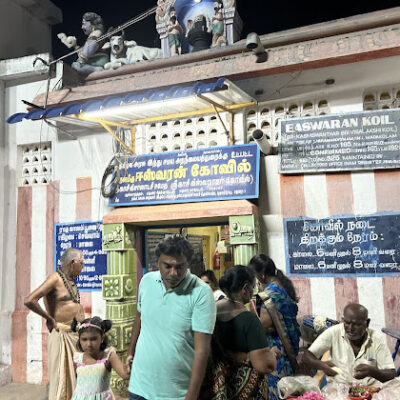Puri Narsimha Temple, Odisha

Address
Puri Narsimha Temple, Odisha
Shawmill Lane, Sarbodaya Nagar,
Puri, Odisha 752002
Moolavar
Narsimha
Introduction
- The Narasimha Temple is located in Puri, Odisha, India, situated to the west of the Gundicha Temple and east of the Indradyumna Tank.
- The temple is dedicated to Lord Narasimha, an incarnation of Lord Vishnu.
Puranic Significance:
- During the attack by Kalapahad on Puri, he was destroying idols of temples when he encountered the Shaanta Narasimha (Calm Narasimha) idol. Upon seeing the idol, Kalapahad’s anger subsided, and he could not destroy the deity.
- Shaanta Narasimha is depicted with human-like features, including a sharp human nose, a large curly mustache, and an outstretched tongue.
- According to the Skanda Purana, King Indradyumna once stayed near the Nilakantheswar Temple to prepare for an Ashwamedha Yajna (Horse Sacrifice) that was to last for a thousand years. Following the advice of Sage Narada, the king created a Narasimha idol from black stone, placing it under a black sandalwood tree to worship. It is believed that the Ashwamedha Yajna was performed at this site, earning the deity the title of ‘Yajna Narasimha’.
- Devotees believe that after taking a sacred bath in the Indradyumna Tank, worshipping Sri Nilakantheswar, Yajna Narasimha, and Panchamukhi Hanuman (five-faced Lord Hanuman) brings great merit (punya).
- Festivals like Narasimha Janma (Narasimha Jayanti) and Satapuri Amavasya are observed with great devotion at the temple.
Beliefs:
- Devotees believe that by worshipping Nilakantheswara, Yajna Narasimha, and Panchamukhi Hanuman after bathing in the Indradyumna Tank, they can earn greater spiritual merit.
Special Features:
- Built in the 13th century CE by the Ganga Kings, the temple is around 60 ft high and faces west. It is commonly known as Nrusingha Temple or Nrusimha Temple.
- The presiding deity is Lord Narasimha, with two idols housed within the temple:
- Shanta Narasimha (Calm Narasimha): The idol in front, representing peaceful and sober qualities. It is believed that looking at this idol removes anger, frustration, and anxiety.
- Ugra Narasimha (Angry Narasimha): The idol at the back, representing the fierce and protective form of Lord Narasimha.
Parshwadevatas (Side Deities):
- According to the Pancharatra and Vaikhanasa traditions, the central idol of Vishnu is surrounded by four side deities. Similarly, the Narasimha Temple follows this pattern:
- The three central niches of the Vimana (temple structure) house the images of Varaha, Trivikrama (Vamana), and Vishnu as the Parsvadevatas.
- Varaha (Boar incarnation) is located in the southern niche and holds a Chakra in his right upper hand and a conch in his left hand, above Goddess Prithvi.
- Trivikrama (Vamana) is in the northern niche. The four-handed deity stands on a double-petalled lotus pedestal, holding a Gada (mace), lotus, Chakra, and conch. The deity’s right leg is firmly grounded, while the left foot touches Brahma, beneath which is a depiction of Bali offering a gift to Vamana.
- Vishnu is housed in the eastern or backside central niche.
- The three central niches of the Vimana (temple structure) house the images of Varaha, Trivikrama (Vamana), and Vishnu as the Parsvadevatas.
- These side deities are aligned as per Vaishnava Agama Shastra, and their worship complements the central Narasimha deity’s significance.
Century/Period
13th Century CE
Managed By
Archaeological Survey of India (ASI)
Nearest Bus Station
Puri
Nearest Railway Station
Puri
Nearest Airport
Bhubaneswar









